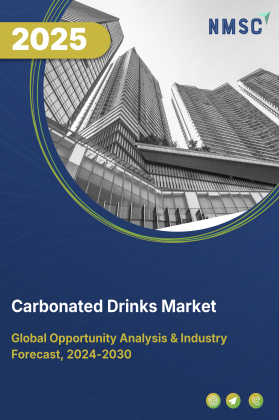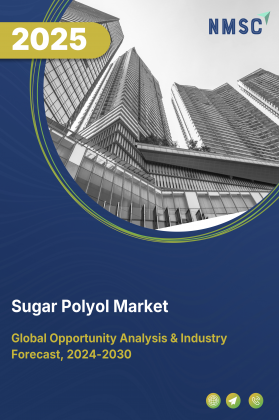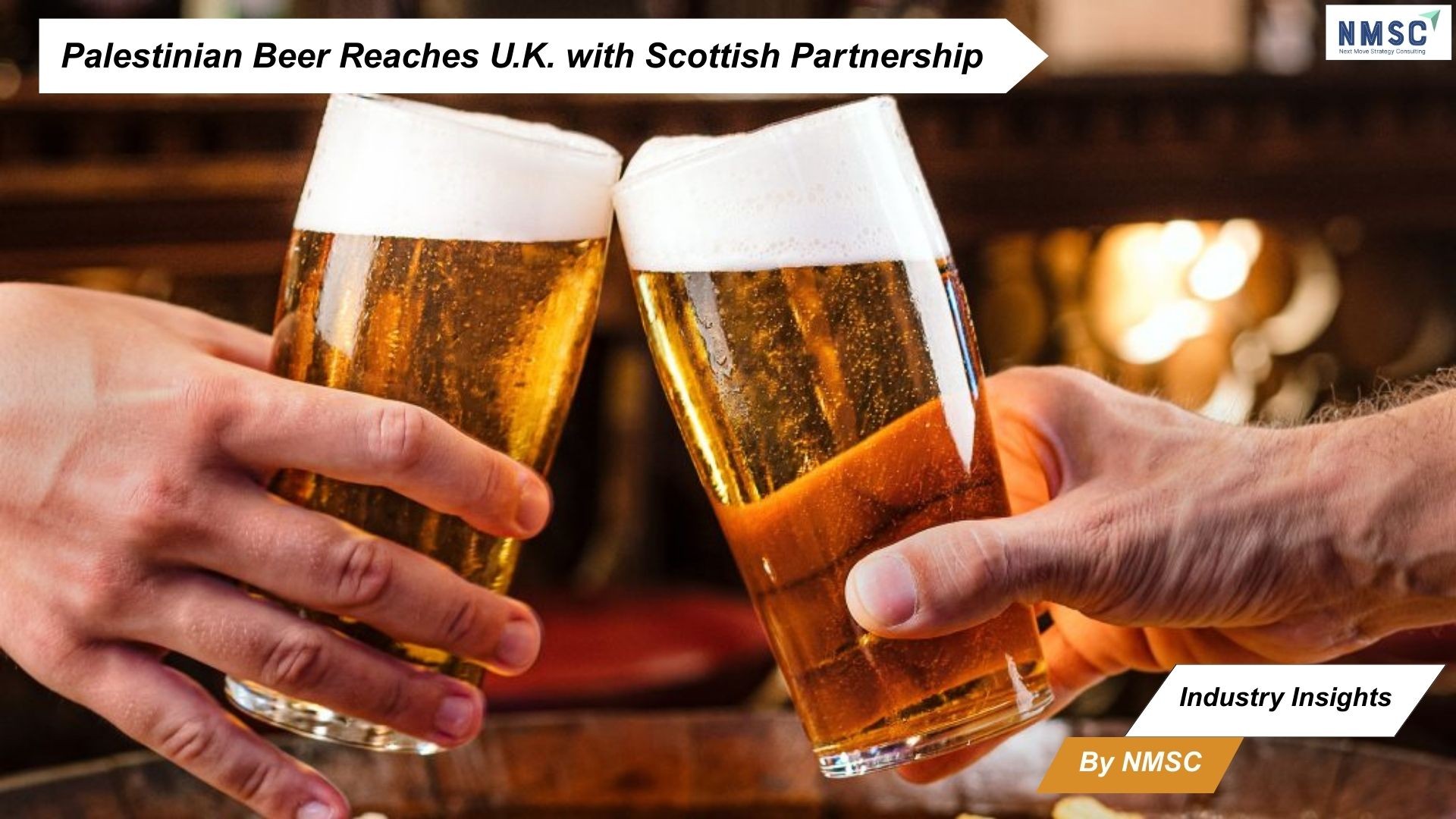
Carbonated Drinks Market by Product Type (Carbonated Soft Drinks, Carbonated Water, Others), by Flavor (Cola, Fruit-Based, Ginger, Others), by Sugar Content (Regular/Sugar-Sweetened, Diet/Zero Sugar, Low Sugar), by Packaging Type (Cans, Bottles, Others), by Age Demographics (Children, Adults, Seniors), by Distribution Channel (Retail – Supermarkets, Hypermarkets, Convenience Stores; Online – E-commerce, D2C Platforms; Foodservice) – Global Analysis & Forecast, 2025–2030.
Industry Outlook
The global Carbonated Drinks Market size was valued at USD 458.10 billion in 2024, and is expected to be valued at USD 478.29 billion by the end of 2025. The industry is projected to grow, hitting USD 593.42 billion by 2030, with a CAGR of 4.41% between 2025 and 2030.
The carbonated drinks market is undergoing rapid transformation, driven by urbanization, rising disposable incomes, shifting consumer lifestyles, and increasing demand for premium, healthier, and innovative beverage options. Globally, demand for refreshing, functional, and low- or no-sugar drinks is rising sharply, fueled by the expansion of retail networks, e-commerce platforms, quick-service restaurants, and on-the-go consumption trends. Growth in online retail, subscription-based delivery models, and smart vending solutions further intensifies the need for product innovation, dynamic packaging, and differentiated marketing strategies. Advancements in natural sweeteners, functional additives (such as vitamins, probiotics, and energy-boosting ingredients), flavor innovations, and sustainable packaging are reshaping product offerings, enhancing consumer experience, and strengthening brand loyalty.
What are the Key Carbonated Drinks Market Trends?
What are the Major Technological Trends Shaping the Carbonated Drinks Market?
Technological advancements are playing a significant role in shaping the market. Innovations in natural sweeteners, flavor-enhancement technologies, and functional ingredient integration are improving product quality and nutritional value. Automated production lines enhance efficiency, consistency, and scalability, while AI-driven consumer insights enable personalized offerings, such as calorie-specific, functional, or flavor-customized beverages. Sustainable manufacturing technologies, including recyclable and biodegradable packaging, energy-efficient production processes, and water-conservation methods, are gaining traction as brands respond to environmental concerns.
How is Demographic Change Influencing the Carbonated Drinks Market?
Demographic and societal shifts are also influencing market growth. Urbanization, rising disposable incomes, and population growth are boosting carbonated drink consumption, especially in emerging markets. Younger, health-conscious, and tech-savvy consumers are increasingly seeking low-calorie, natural, and functional beverages, while aging populations in developed regions are driving demand for low-sugar, digestive-friendly, and wellness-oriented drinks. These demographic changes are fuelling the development of diverse and targeted product portfolios.
What Role does Government Support Play in Driving the Carbonated Drinks Market Growth?
Government support is a critical factor in driving industry expansion. Initiatives such as sugar-tax regulations, food safety standards, and sustainability policies are shaping production and consumption trends. Incentives for domestic manufacturing, R&D investments, and MSMEs foster innovation and market competition, while public health campaigns encourage responsible consumption and promote low-sugar or fortified beverages. Supportive trade policies and infrastructure development also contribute to strengthening distribution networks in both developed and emerging markets.
How is Consumer Preference Changing in the Carbonated Drinks Market?
Consumer preferences are evolving rapidly. Modern buyers favor customized, premium, and healthier carbonated drinks with clear functional or wellness benefits. There is growing emphasis on eco-friendly packaging, natural flavoring, and ethical sourcing, with consumers shifting away from high-sugar, generic sodas toward beverages that reflect their lifestyle, health, and sustainability values. Overall, the market is transitioning from traditional soft drinks to innovative, consumer-focused, and environmentally responsible beverage solutions that align with contemporary needs.
What are the Key Market Drivers, Breakthroughs, and Investment Opportunities that will Shape the Carbonated Drinks Industry in Next Decade?
The carbonated drinks market is witnessing robust growth, driven by rapid urbanization and rising disposable incomes, which increase consumer access to modern retail outlets, e-commerce platforms, and premium beverage options. Urban residents, exposed to global trends and convenience-driven lifestyles, are fuelling demand for on-the-go, functional, and specialty carbonated drinks. Expansion of organized retail and online channels further accelerates market growth by offering greater product visibility, variety, and accessibility. However, rising health concerns over sugar, artificial sweeteners, and additives are restraining traditional soda consumption. This challenge is counterbalanced by growing demand for low-sugar, zero-calorie, and functional beverages, creating opportunities for innovation, wellness-oriented products, and targeted marketing to health-conscious consumers globally.
The bar chart highlights household disposable income in USD PPP across selected countries in 2024–2025, showing Japan with the highest at USD 67,468, followed by Germany, the UK, Canada, and South Korea. Higher disposable incomes indicate greater consumer spending power, which directly influences demand for premium and specialty carbonated drinks. Markets like Japan and Germany, with substantial per capita incomes, are likely to favor flavored, low-sugar, functional, and premium beverage offerings, while countries with moderate disposable income, such as South Korea, may focus on value-oriented and mainstream carbonated drinks. Rising incomes across these regions support market expansion, product diversification, and increased adoption of health-conscious and convenience-driven beverage options.
Growth Drivers:
How is Urbanization & Rising Disposable Incomes Driving the Carbonated Drinks Market Demand?
Rapid urbanization is a key driver of the market, as it increases the number of consumers with access to modern retail outlets, quick-service restaurants, and e-commerce platforms. According to the World Bank, the urban population accounts for 66% of China’s total population and 84% of the U.S. population, highlighting the significant concentration of potential consumers in cities. Urban residents tend to have higher exposure to global beverage trends, marketing campaigns, and premium product offerings. When combined with rising disposable incomes, this demographic shift enables consumers to spend more on premium, functional, and specialty beverages rather than traditional sodas. The expansion of urban populations, coupled with increasingly fast-paced lifestyles, fuels demand for convenient, on-the-go, and health-oriented carbonated drinks, making urbanization and income growth critical factors in driving market expansion and product innovation.
The chart illustrates the urban population (in millions) across selected countries in 2024. Germany leads with 65.05 million urban residents, followed by the UK at 58.76 million and France at 56.21 million. South Korea and Canada have moderately urbanized populations of 42.17 million and 33.84 million, respectively, while Australia has the lowest at 23.60 million. Large urban populations drive demand for carbonated drinks by increasing access to modern retail, e-commerce platforms, and on-the-go consumption. Urban consumers are more exposed to global beverage trends, premium options, and convenient products, making urbanization a critical factor for market growth and product innovation.
Is Expansion of E-Commerce and Modern Retail Channels Accelerating the Carbonated Drinks Market Growth?
The growing presence of online retail platforms, supermarkets, hypermarkets, and convenience stores is significantly driving the market. E-commerce platforms enable consumers to access a wide variety of beverages, including premium, low-sugar, and functional carbonated drinks, from the comfort of their homes, thereby boosting overall consumption. Modern retail channels provide greater visibility for new product launches, promotional campaigns, and flavor innovations, helping brands reach a wider and more diverse customer base. This expansion also allows companies to leverage digital marketing, subscription-based delivery models, and personalized product recommendations, enhancing consumer engagement and encouraging repeat purchases. As consumers increasingly value convenience, variety, and accessibility, the rise of online and organized retail channels is becoming a critical driver in boosting sales and accelerating the growth of the carbonated drinks market.
The pie chart illustrates the global e-commerce market share by country in 2025, with China leading at 52.1%, followed by the USA at 20.1%, and smaller contributions from the UK, Japan, South Korea, Germany, and France. The dominance of e-commerce, particularly in China and the USA, is a key driver for the carbonated drinks market, enabling brands to reach a wider audience, including urban and remote consumers. Online platforms allow consumers to access a variety of beverages, premium, low-sugar, and functional options, conveniently from home. Growing e-commerce adoption supports market expansion, product innovation, and targeted marketing strategies, accelerating consumption and enhancing brand visibility globally.
Growth Inhibitors:
How Does Health Concerns Related to Sugar and Artificial Ingredients Limit the Carbonated Drinks Market Share?
One of the major restraints of the market is the growing health concern over high sugar content, artificial sweeteners, and additives commonly found in soft drinks. Rising awareness about obesity, diabetes, and lifestyle-related health issues is leading many consumers to reduce or avoid sugary beverages. Government regulations, such as sugar taxes and restrictions on marketing to children, are further pressuring manufacturers to reformulate products and limit their traditional offerings. This increasing health consciousness poses a challenge to conventional carbonated drinks, potentially slowing market growth in certain regions.
How is Rising Demand for Healthier & Functional Beverages Creating Opportunity for the Market?
A key opportunity in the market lies in the growing consumer preference for healthier, low-calorie, and functional beverages. Increasing awareness of wellness and nutrition is creating strong demand for drinks fortified with natural sweeteners, vitamins, probiotics, and energy-boosting ingredients. This shift allows brands to innovate with zero-sugar, organic, and plant-based carbonated drinks that appeal to health-conscious and younger demographics. Companies that successfully align with these wellness trends capture new market segments, enhance brand loyalty, and expand their global presence.
How Carbonated Drinks Market is Segmented in this Report, And What are the Key Insights from the Segmentation Analysis?
By Product Type Insights
Which Product Type Is Expected to Drive the Carbonated Drinks Market in 2025?
On the basis of product type, the market is segmented into Carbonated Soft Drinks (CSDs), Carbonated Water, Sports & Energy Drinks, Sparkling Functional Beverages, and Others. The carbonated drinks market in 2025 is expected to be primarily driven by Carbonated Soft Drinks (CSDs). CSDs continue to dominate consumer preference due to their widespread popularity, strong brand presence, affordability, and availability across retail and online channels. Their refreshing taste and variety of flavors make them a staple choice for consumers across age groups and geographies.
While other segments such as Carbonated Water and Sports & Energy Drinks are gaining traction due to growing health consciousness, fitness trends, and on-the-go consumption, CSDs remain the backbone of the market. Additionally, Sparkling Functional Beverages and Others are emerging as high-potential categories, driven by increasing consumer demand for functional benefits, natural ingredients, low-sugar formulations, and premium, innovative products that cater to wellness-oriented lifestyles.
By Flavor Insights
Which Flavors Are Likely to Lead the Carbonated Drinks Market in 2025?
On the basis of flavor, the market is segmented into Cola, Fruit-Based, Ginger, and Others. The market in 2025 is expected to be primarily driven by Cola-flavored drinks. Cola continues to dominate consumer preference due to its strong brand recognition, classic taste, and wide appeal across age groups and regions. Its popularity is reinforced by aggressive marketing, global presence, and availability in various packaging formats.
While other segments such as Fruit-Based and Ginger-flavored drinks are gaining traction due to rising interest in natural flavors, health-conscious choices, and unique taste experiences, Cola remains the backbone of the market. Additionally, the others segment is emerging as a high-potential category, driven by growing consumer demand for exotic, low-sugar, and functional flavor options that cater to niche tastes and innovative beverage experiences.
By Sugar Content Insights
Which Sugar Content Categories Are Driving the Carbonated Drinks Market in 2025?
On the basis of sugar content, the market is segmented into Regular/Sugar-Sweetened, Diet/Zero Sugar, and Low Sugar. The market in 2025 is expected to be primarily driven by Regular/Sugar-Sweetened beverages. These drinks continue to dominate consumer preference due to their familiar taste, strong brand presence, and wide availability across retail and online channels. They remain the go-to option for consumers seeking traditional flavor experiences.
Meanwhile, Diet/Zero Sugar and Low Sugar segments are gaining significant traction due to increasing health consciousness, rising awareness about sugar intake, and growing demand for low-calorie beverages. These segments are particularly popular among fitness-oriented and wellness-conscious consumers. Additionally, the Low Sugar category is emerging as a high-potential segment, driven by the trend of balancing taste with healthier formulations without compromising on flavor.
By Packaging Type Insights
Which Packaging Types Are Expected to Lead the Carbonated Drinks Market in 2025?
On the basis of packaging type, the market is segmented into Cans, Bottles, and Others. The market in 2025 is expected to be primarily driven by Bottled beverages. Bottles continue to dominate consumer preference due to their convenience, portability, resealability, and wide availability in different sizes suitable for individual and family consumption. Glass and PET bottles also appeal to premium and environmentally-conscious consumers.
While Cans are gaining popularity due to convenience, portability, and rising on-the-go consumption, they still complement bottles as a secondary choice. The Others segment, including multipacks, pouches, and innovative packaging formats, is emerging as a high-potential category, driven by growing consumer interest in sustainable, compact, and customizable packaging solutions.
By Age Demographics Insights
Which Age Groups Are Likely to Lead Carbonated Drinks Consumption in 2025?
On the basis of age demographics, the market is segmented into Children, Adults, and Seniors. The market in 2025 is expected to be primarily driven by adults. Adults continue to dominate consumption due to their higher purchasing power, frequent social and recreational consumption occasions, and preference for a wide variety of flavors and functional beverage options.
While Children remain a key consumer segment, especially for sweetened and flavored drinks, their consumption is increasingly influenced by parental choices and health awareness. The Seniors segment is smaller but growing, driven by demand for low-sugar, functional, and health-oriented beverages. Additionally, products catering to wellness-conscious adults and seniors are emerging as high-potential categories, aligning with trends toward healthier lifestyles and functional beverages.
By Distribution Channel Insights
Which Channels Are Shaping the Growth of the Carbonated Drinks Market in 2025?
On the basis of distribution channel, the market is segmented into Retail, Online, and Foodservice. The market in 2025 is expected to be primarily driven by Retail channels. Retail continues to dominate due to its wide accessibility, variety of options, in-store promotions, and strong presence in urban and semi-urban areas. Supermarkets, hypermarkets, convenience stores, and local grocery shops remain the preferred purchase points for most consumers.
While Online channels are rapidly gaining traction, driven by e-commerce growth, home delivery convenience, and increasing digital adoption, they still complement retail sales rather than surpass them. Foodservice outlets, including restaurants, cafes, and quick-service restaurants, are also emerging as important channels, fueled by on-the-go consumption and social dining trends. Additionally, innovative partnerships and omnichannel strategies are creating growth opportunities across all channels.
Regional Outlook
The market is geographically studied across North America, Europe, Asia Pacific, and the Middle East & Africa, and each region is further studied across countries.
Carbonated Drinks Market in North America
The North American market is being driven by rising consumer demand for healthier, low-sugar, and premium beverages. Expanding retail networks, including supermarkets, hypermarkets, quick-service restaurants, and e-commerce platforms, are enhancing product accessibility and visibility. Urban populations are increasingly opting for functional, flavored, and on-the-go beverage options, while the trend toward natural ingredients and sustainable packaging is creating additional growth opportunities for manufacturers across the region.
Carbonated Drinks Market in the United States
In the U.S., market growth is primarily fueled by the rising adoption of low-calorie, organic, and premium carbonated drinks. Health-conscious and wellness-oriented consumers are seeking beverages with natural sweeteners, functional additives, and innovative flavor combinations. The expansion of organized retail and digital channels allows brands to reach diverse consumer segments, while product innovation and eco-friendly packaging are enabling differentiation and building brand loyalty.
Carbonated Drinks Market in Canada
In Canada, demand for carbonated drinks is being driven by urbanization, higher disposable incomes, and increasing interest in healthier beverage choices. Consumers prefer drinks that offer added benefits such as natural ingredients, reduced sugar, or unique flavors. E-commerce and modern retail channels are expanding market reach, while growing interest in environmentally sustainable packaging encourages manufacturers to innovate in formulations, portion sizing, and distribution models.
Carbonated Drinks Market in Europe
The European market is supported by strong consumer focus on health, wellness, and sustainability. Consumers are increasingly adopting low-sugar, organic, and functional beverages enriched with natural flavors and wellness benefits. Retail modernization, the rapid growth of online shopping, and sustainability initiatives are driving product visibility and accessibility. The market is also witnessing innovations in plant-based, premium, and eco-friendly drinks, creating opportunities for brands to cater to diverse consumer preferences across countries.
Carbonated Drinks Market in the United Kingdom
In the U.K., the market is primarily driven by growing consumer focus on healthier lifestyles, premiumization, and sustainable choices. Urban populations and higher disposable incomes are fueling demand for low-calorie, functional, and specialty beverages, while increasing awareness of natural sweeteners and eco-friendly packaging is shaping purchase preferences. The expansion of modern retail chains, vending solutions, and e-commerce platforms is improving product accessibility and visibility, enabling consumers to explore a wider variety of beverage offerings. Additionally, government policies around sugar reduction and public health further support the shift toward healthier carbonated drink consumption, contributing to steady market growth across the country.
The chart illustrates mobile internet penetration across different regions in 2024, expressed in percentages. North America leads with 80%, followed by Europe & Central Asia at 75% and Asia Pacific at 72%. Latin America has a penetration of 61%, MENA 49%, and Sub-Saharan Africa the lowest at 27%.
High mobile internet penetration supports the market by enabling greater access to e-commerce platforms, online promotions, and digital marketing campaigns. Regions with widespread mobile connectivity, such as North America, Europe, and Asia Pacific, are likely to experience higher online and on-the-go purchases of carbonated drinks. In contrast, markets with lower penetration, like Sub-Saharan Africa, may see slower growth in digital-driven beverage sales, highlighting the importance of mobile accessibility for expanding market reach.
Carbonated Drinks Market in Germany
Germany’s market is primarily driven by consumer preference for premium, low-sugar, and natural beverages, coupled with high awareness of health and wellness. Urban populations with higher disposable incomes are increasingly seeking functional, flavored, and innovative drinks. The expansion of modern retail outlets and e-commerce platforms enhances accessibility, while sustainability trends encourage the adoption of recyclable packaging and natural ingredients, supporting steady market growth.
Carbonated Drinks Market in France
In France, market growth is fueled by urbanization and rising health-consciousness. Consumers are increasingly adopting organic, natural, and wellness-oriented beverages, with a strong demand for low-calorie and functional carbonated drinks. Modern retail channels, including supermarkets, specialty beverage stores, and online platforms, are improving product visibility and availability. The demand for premium and healthier alternatives is further supported by lifestyle trends focused on sustainability and wellness.
Carbonated Drinks Market in Spain
Spain’s market is significantly influenced by urbanization and rising disposable incomes, which are expanding access to modern retail and online shopping platforms. Consumers in urban areas are showing strong preference for premium, functional, and low-sugar beverages, creating opportunities for brands to innovate in flavors, ingredients, and packaging. Sustainability trends and eco-conscious purchasing behavior are also encouraging the adoption of natural and ethically sourced drinks, driving market growth.
Carbonated Drinks Market in Italy
Italy’s market growth is being driven by increasing health and wellness awareness, along with strong demand for premium and natural carbonated beverages. Consumers are increasingly seeking drinks with reduced sugar, natural flavorings, and functional benefits, supported by urbanization and rising disposable incomes. The expansion of modern retail and e-commerce channels enhances product accessibility, while growing interest in sustainable, eco-friendly packaging provides opportunities for differentiation and brand loyalty.
Carbonated Drinks Market in the Nordics
In the Nordic countries, the market is primarily driven by high consumer awareness of health, wellness, and sustainable lifestyles. Urban populations with higher disposable incomes are seeking premium, organic, and functional beverages. The market is also influenced by strong trends toward eco-friendly packaging and low-calorie formulations, while modern retail chains and e-commerce platforms provide greater accessibility and visibility. Consumers in these regions increasingly prefer drinks that combine wellness, taste, and environmental responsibility, supporting steady market growth.
Carbonated Drinks Market in Asia Pacific
The market in Asia Pacific is fueled by rapid urbanization, rising disposable incomes, and shifting lifestyle patterns. Countries such as India, China, South Korea, and Australia are witnessing strong demand for premium, low-sugar, and functional beverages, driven by expanding urban populations and increasing health consciousness. The growth of modern retail outlets and online shopping platforms is improving accessibility, while consumers are increasingly opting for natural ingredients, innovative flavors, and eco-friendly packaging. Rising wellness trends, sustainability considerations, and the preference for convenient, on-the-go beverages are creating significant opportunities for product innovation and market expansion across the region.
Carbonated Drinks Market in China
China’s market growth is primarily driven by urbanization, rising disposable incomes, and increasing demand for premium and innovative beverages. Consumers are seeking low-sugar, functional, and flavored carbonated drinks that align with health and wellness trends. The expansion of e-commerce platforms and modern retail chains enhances product availability, while growing interest in eco-friendly and sustainable packaging is fostering brand differentiation and market developmen.
Carbonated Drinks Market in Japan
Japan’s market is influenced by aging demographics, high health consciousness, and the premiumization of beverage choices. Consumers increasingly prefer low-calorie, functional, and innovative drinks with added wellness benefits. Availability through supermarkets, specialty stores, vending machines, and online platforms supports accessibility, while sustainability trends and demand for natural ingredients encourage continuous innovation and product differentiation.
Carbonated Drinks Market in India
In India, the market is being significantly driven by rapid urbanization, rising disposable incomes, and growing health awareness. According to the World Bank, India’s urban population is approximately 534.91 million, highlighting the large concentration of consumers in cities. This demographic shift, combined with lifestyle changes, is boosting demand for premium, flavored, and low-sugar carbonated drinks. The expansion of modern retail outlets, convenience stores, and e-commerce platforms, along with increasing focus on eco-friendly packaging and functional beverage options, is creating strong opportunities for product innovation and market growth across urban centers.
Carbonated Drinks Market in South Korea
In South Korea, the market is primarily driven by urbanization, rising disposable incomes, and strong consumer focus on health and wellness. Urban populations are increasingly seeking premium, low-sugar, and functional carbonated beverages. Growing demand for natural flavors, eco-friendly packaging, and innovative product offerings, along with widespread availability through modern retail chains, convenience stores, and e-commerce platforms, supports consistent market growth and encourages further innovation in beverage formulations and marketing strategies.
Carbonated Drinks Market in Taiwan
Taiwan’s market growth is fueled by health-conscious and wellness-oriented consumers who prefer premium, low-sugar, and functional carbonated beverages. Expansion of urban areas, higher disposable incomes, and exposure to global beverage trends are driving adoption of natural ingredients, innovative flavors, and eco-friendly packaging. Retail modernization and online shopping platforms improve accessibility, while sustainability trends and demand for environmentally responsible products create opportunities for product differentiation and innovation.
Carbonated Drinks Market in Indonesia
In Indonesia, the market is being driven by rapid urbanization, a growing middle-class population, and rising health awareness. Consumers are increasingly seeking low-sugar, flavored, and functional beverages, while e-commerce and modern retail channels improve accessibility and variety. Rising interest in natural ingredients, eco-friendly packaging, and innovative flavors encourages brands to experiment with product formulations and marketing strategies, creating strong growth prospects across urban and semi-urban markets.
Carbonated Drinks Market in Australia
Australia’s market is supported by urbanization, rising disposable incomes, and growing preference for premium and functional beverages. Urban consumers increasingly seek low-calorie, flavored, and health-oriented carbonated drinks that offer wellness benefits. The expansion of modern retail outlets and online platforms enhances product visibility, while sustainability trends and eco-conscious purchasing behavior drive demand for recyclable and environmentally responsible packaging, fostering innovation and market growth across the country.
Carbonated Drinks Market in Latin America
In Latin America, the market is primarily driven by rapid urbanization, rising disposable incomes, and increasing health awareness. Growing urban populations in countries such as Brazil, Mexico, and Argentina are fuelling demand for premium, flavored, and functional carbonated drinks. Expansion of modern retail outlets, supermarkets, and e-commerce platforms enhances accessibility and product visibility, while consumer preference for natural ingredients, low-sugar options, and eco-friendly packaging encourages innovation and market growth across metropolitan and semi-urban areas.
Carbonated Drinks Market in the Middle East & Africa
In the Middle East and Africa, market growth is supported by urbanization, rising health consciousness, and increasing adoption of functional and premium carbonated beverages. Consumers are seeking low-sugar, flavored, and wellness-oriented drinks, with growing interest in natural ingredients and environmentally responsible packaging. The expansion of retail channels, including supermarkets, convenience stores, and online platforms, improves product availability, while the demand for sustainable and eco-friendly beverages presents opportunities for differentiation and innovation, driving steady growth across the region.
Competitive Landscape
Which Companies Dominate the Carbonated Drinks Market and How Do They Compete?
The global carbonated drinks market share is dominated by established multinational manufacturers and regional players such as PepsiCo, Inc., The Coca-Cola Company, Keurig Dr Pepper Inc., Red Bull GmbH, Asahi Group Holdings, Ltd., Suntory Beverage & Food Ltd., Monster Beverage Corporation, National Beverage Corp., Refresco Group B.V., Nestlé S.A., A.G. Barr plc, LOTTE Chilsung Beverage Co., Ltd., Fraser & Neave (F&N Group), Ajegroup (AJE), and Varun Beverages Ltd. These companies compete by offering a broad range of carbonated beverages across mass-market, premium, functional, low- or no-sugar, flavored, and niche segments, catering to diverse consumer preferences worldwide.
Market leaders differentiate themselves through innovative formulations, multifunctional benefits (such as energy-boosting or wellness ingredients), sustainable and eco-friendly packaging, and brand positioning. Their strategies also focus on expanding global and regional distribution networks, marketing campaigns, sponsorships, and product diversification. Regional specialists and niche brands compete by offering localized flavors, natural ingredients, and health-focused beverages, targeting specific consumer demographics and markets. As demand grows for healthier, functional, and premium carbonated drinks, companies that combine product innovation, sustainability, and operational efficiency are capturing market share and establishing strong brand loyalty in the market.
Market dominated by Carbonated Drinks Market Giants and Specialists
The market is split between large multinational manufacturers and regional or niche players. Large companies compete on scale, brand recognition, extensive distribution networks, and broad product portfolios, offering a wide range of carbonated beverages from mass-market sodas to premium and functional drinks. Smaller or specialist providers focus on organic, low-sugar, flavored, or functional formulations, catering to specific consumer preferences, local markets, or niche segments. This creates a dual market structure where consumers either choose well-established brands for reliability and variety or opt for specialized products that meet unique health, flavor, or wellness requirements.
Innovation and Adaptability Drive Market Success
Market leaders are investing in innovative formulations, natural and functional ingredients, and advanced production technologies to enhance product quality, taste, and consumer appeal. Companies are developing low-sugar, flavored, functional, and organic carbonated drinks, alongside eco-friendly packaging to meet evolving consumer preferences. Brands that adapt to trends like personalization, wellness-oriented beverages, and sustainability are securing stronger market presence and loyalty. Continuous innovation in flavor profiles, functional benefits, packaging, and beverage formats is key to maintaining a competitive advantage.
Market Players to Opt for Merger & Acquisition Strategies to Expand Their Presence
Mergers and acquisitions have become a strategy for carbonated drinks companies to expand product portfolios, enter new geographic markets, and acquire specialized formulations or production capabilities. Leading manufacturers are acquiring regional or niche beverage brands to strengthen market share, diversify offerings, and integrate advanced production technologies. These M&A activities enable companies to reach new consumer segments, scale operations, and respond effectively to growing demand for premium, functional, and eco-friendly carbonated drinks, while enhancing their competitive positioning in both mass-market and specialty categories.
List of Key Carbonated Drinks Companies
-
PepsiCo, Inc.
-
The Coca-Cola Company
-
Keurig Dr Pepper Inc.
-
Red Bull GmbH
-
Asahi Group Holdings, Ltd.
-
Suntory Beverage & Food Ltd.
-
Monster Beverage Corporation
-
National Beverage Corp.
-
Refresco Group B.V.
-
Nestlé S.A.
-
A.G. Barr plc
-
LOTTE Chilsung Beverage Co., Ltd.
-
Fraser & Neave (F&N Group)
-
Ajegroup (AJE)
-
Varun Beverages Ltd.
What Are the Latest Key Industry Developments?
-
September 2025 - Coca-Cola plans to establish new manufacturing plants in Telangana, India, as part of a significant investment to boost local production and employment.
-
August 2025 - Red Bull sold 12.67 billion cans in 2024, a 4.4% increase from the previous year, solidifying its position as a leader in the energy drink sector.
-
March 2025 - PepsiCo acquired prebiotic soda brand Poppi for USD 1.95 billion, expanding its portfolio into functional beverages with low sugar content.
-
February 2025 - The company unveiled a 2025 flavor lineup for brands like Dr Pepper, 7UP, A&W, and Snapple, aiming to attract a broader consumer base.
-
October 2024 - Coca-Cola introduced “Coke Spiced,” a new permanent flavor, and “Sprite Chill,” a fruit-infused variant, aiming to diversify its product offerings.
What Are the Key Factors Influencing Investment Analysis & Opportunities in the Carbonated Drinks Market?
The market is attracting growing investor attention as global demand rises for premium, low-sugar, functional, and flavored beverages. Companies offering innovative formulations, natural and functional ingredients, and differentiated packaging are particularly appealing, with investments focused on scalable production, product innovation, and sustainable practices. Market activity is strong in North America, Europe, and Asia-Pacific, where urbanization, rising disposable incomes, health consciousness, and wellness trends are driving rapid adoption of high-quality carbonated drinks. Strategic mergers, acquisitions, and partnerships by leading manufacturers highlight consolidation as a key growth strategy. For investors, the most promising opportunities lie in companies that combine diverse product portfolios, technological and formulation innovation, operational efficiency, and the ability to cater to evolving consumer preferences across mass-market, premium, and niche beverage segments.
Key Benefits for Stakeholders:
Next Move Strategy Consulting (NMSC) presents a comprehensive analysis of the market, covering historical trends from 2020 through 2024 and offering detailed forecasts through 2030. Our study examines the market at global, regional, and country levels, providing quantitative projections and insights into key growth drivers, challenges, and investment opportunities across all major carbonated drinks market segments.
Report Scope:
|
Parameters |
Details |
|
Market Size in 2025 |
USD 478.29 Billion |
|
Revenue Forecast in 2030 |
USD 593.42 Billion |
|
Growth Rate |
CAGR of 4.41% from 2025 to 2030 |
|
Analysis Period |
2024–2030 |
|
Base Year Considered |
2024 |
|
Forecast Period |
2025–2030 |
|
Market Size Estimation |
Billion (USD) |
|
Growth Factors |
|
|
Companies Profiled |
15 |
|
Countries Covered |
28 |
|
Market Share |
Available for 10 companies |
|
Customization Scope |
Free customization (equivalent to up to 80 analyst-working hours) after purchase. Addition or alteration to country, regional & segment scope. |
|
Pricing and Purchase Options |
Avail customized purchase options to meet your exact research needs. |
|
Approach |
In-depth primary and secondary research; proprietary databases; rigorous quality control and validation measures. |
|
Analytical Tools |
Porter's Five Forces, SWOT, value chain, and Harvey ball analysis to assess competitive intensity, stakeholder roles, and relative impact of key factors. |
Key Market Segments
By Product Type
-
Carbonated Soft Drinks (CSDs)
-
Carbonated Water
-
Sports & Energy Drinks
-
Sparkling Functional Beverages
-
Others
By Flavor
-
Cola
-
Fruit-Based
-
Ginger
-
Others
By Sugar Content
-
Regular / Sugar-Sweetened
-
Diet / Zero Sugar
-
Low Sugar
By Packaging Type
-
Cans
-
Bottles
-
Others
By Age Demographics
-
Children
-
Adults
-
Seniors
By Distribution Channel
-
Retail
-
Supermarkets
-
Hypermarkets
-
convenience stores
-
Online
-
E-commerce
-
D2C platforms
-
Foodservice
Geographical Breakdown
North America: U.S., Canada, and Mexico.
Europe: U.K., Germany, France, Italy, Spain, Sweden, Denmark, Finland, Netherlands, and rest of Europe.
Asia Pacific: China, India, Japan, South Korea, Taiwan, Indonesia, Vietnam, Australia, Philippines, and rest of APAC.
Middle East & Africa (MENA): Saudi Arabia, UAE, Egypt, Israel, Turkey, Nigeria, South Africa, and rest of MENA.
Latin America: Brazil, Argentina, Chile, Colombia, and rest of LATAM
Conclusion & Recommendations
Our report equips stakeholders, industry participants, investors, policy-makers, and consultants with actionable intelligence to capitalize on the market transformative potential. By combining robust data-driven analysis with strategic frameworks, NMSC’s carbonated drinks market report serves as an indispensable resource for navigating the evolving landscape.




















 Speak to Our Analyst
Speak to Our Analyst

























